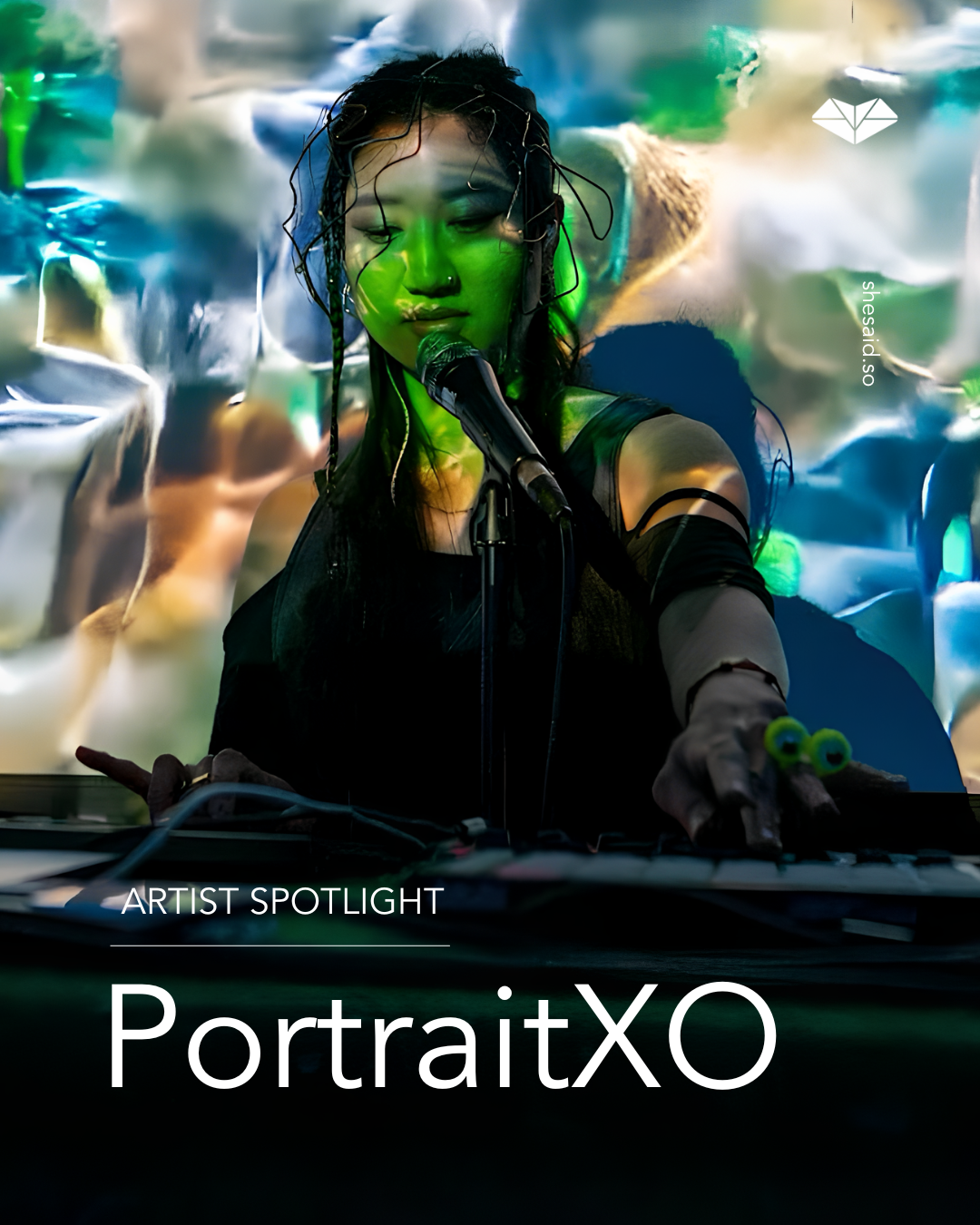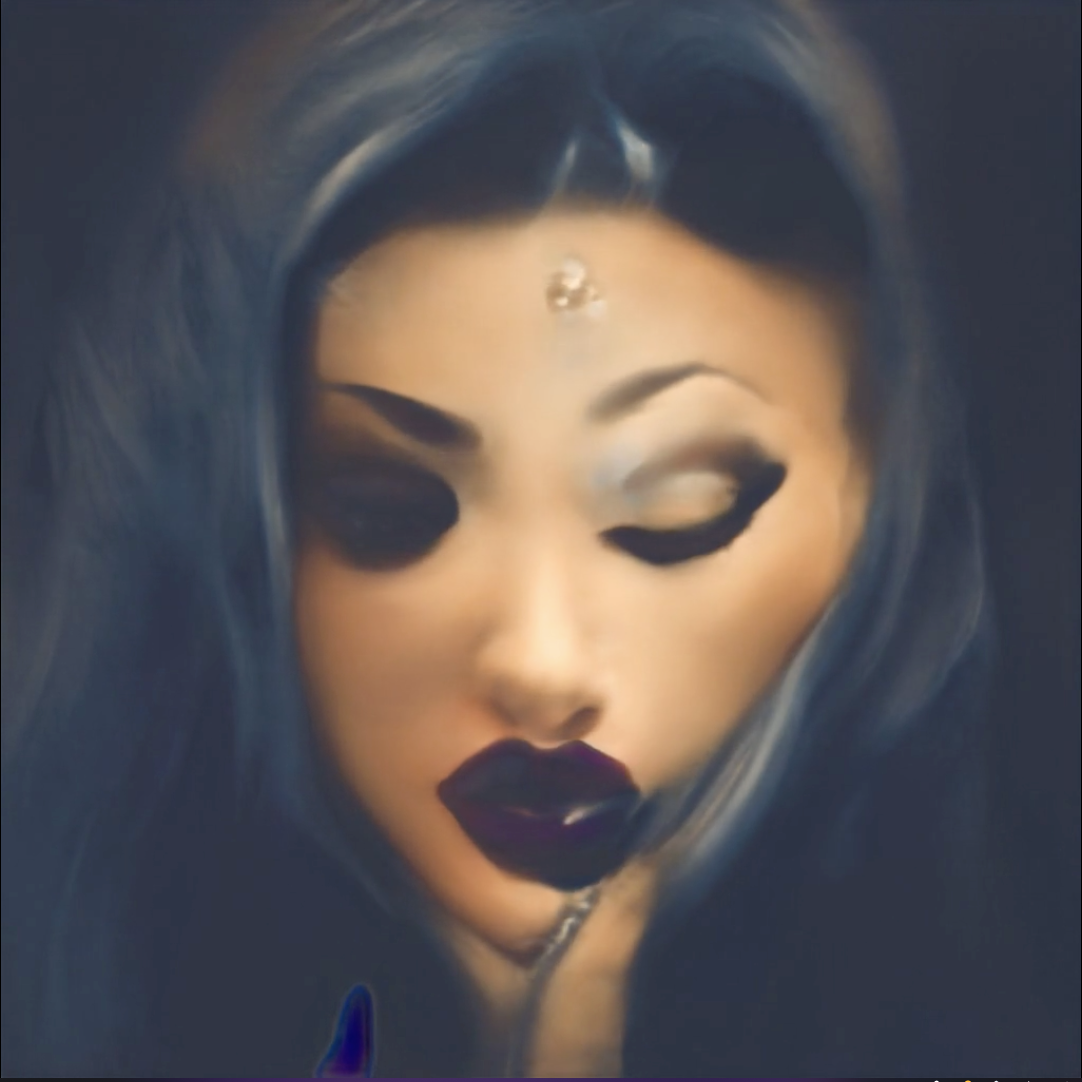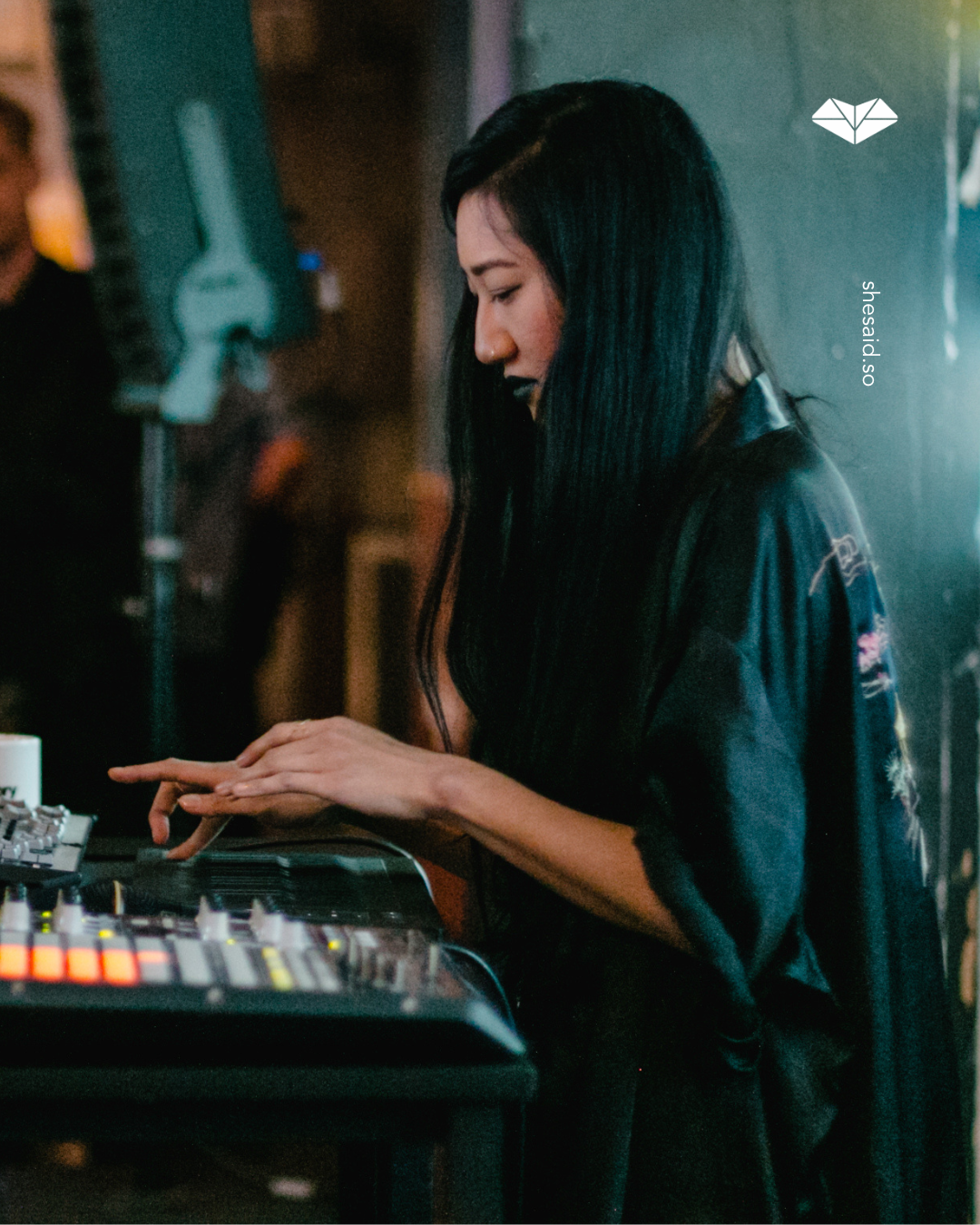For this month’s Member Spotlight we spoke to Kaitlyn Davies (she/her), a Canadian based in Lisbon, where she works and collaborates at the forefront of music and technology. She explores this nexus through research, facilitation and community organising in her roles at Friends With Benefits and Refraction DAO’s, and hosts radio shows on Refuge Worldwide and Cashmere Radio. Kaitlyn was kind enough to tell us more about her work in web3 and beyond, as well as to share some of her learnings and advice from her career so far.
shesaid.so: Tell us a little more about yourself, and your career journey so far.
Kaitlyn: Hi! I’m Kaitlyn, a Canadian based in Lisbon via Berlin, New York and London. I got my start in the music industry helping out at a university radio station in Toronto while I was in high school, which led me to an artist and brand development company where I held roles across public relations and artist management. I was feeling the itch to engage with bigger markets and live outside of my hometown Toronto, and ended up moving to London, UK in 2016. My time in London started out with me working in film festivals, but I could sense I wanted to be back closer to music. Through a stroke of luck and good timing, I ended up in the Boiler Room offices (which is where I first got introduced to shesaid.so!). Boiler Room was a wild ride and I spent time in both the London and New York offices over the course of the next 2 years, while also working on summer music festivals back in Canada. My visa in the UK was coming to an end but I wasn’t ready to leave Europe, and decided to move to Berlin in 2018. In Berlin I switched from working primarily in events and marketing to the recorded music industry, where I spent time in the !K7 Records offices before landing in the digital content operations department at SoundCloud for three years.
While I was at SoundCloud, I started a collective, CO:QUO, with two amazing humans + fellow shesaid.so members, Mel Powell and PortraitXO. Our focus is to facilitate events, conversation and practice-based education across music, technology, art and science, and we’ve collaborated with artists, collectives, brands, and governmental funding bodies to bring our thinking to life. Operating at these intersections with CO:QUO and alongside some personal research, I inevitably ended up exploring blockchain and web3 technologies at the beginning of 2021. This research culminated in a series of digital events I produced with the collective exploring the future possibilities and limitations of technology for the music industry. This marked the beginning of my professional journey in the space, where I now work with and for two cultural DAO’s (Decentralized Autonomous Organizations) Friends With Benefits and Refraction leading membership and curatorial partnerships, respectively. There is so much more to be said in between all of these lines, but an interest in the way humans, communities, art and technology interact has been the driving force behind what I do, why I move, and why I stay up late on the internet or at the rave.
shesaid.so: What do you consider some of your greatest career achievements, and why?
Kaitlyn: Although I’d consider CO:QUO more of a personal project than career achievement, starting the collective has opened so many doors and given me the opportunity to pursue ideas collaboratively. I’m so proud of the work we’ve done, from our first residency at the Night Embassy to our monthly radio show on Refuge Worldwide.
This summer, I had the pleasure of working on the programming team for the inaugural FWB FEST in Idyllwild, California. The extended Friends With Benefits fam gathered in the forest for some big discussions, wicked musical performance, and one of the most magical sunsets I’ve ever seen. Pulling off this event with our dream team, and receiving positive feedback from our community was a big career highlight.
Literally, the day after FWB FEST ended, our curatorial team at Refraction huddled up to begin decision making on our Creative Grants programme, which has been such a rewarding process from day dot. The programme has allowed us to decentralize our operations and collection, while supporting members of the DAO in realizing creative projects all over the world. The redistribution of capital and lowering barriers to entry are a huge part of why I decided to get involved in web3, and this project has helped drive that mission.
shesaid.so: What are some of the challenges you've faced, and how have they shaped you and your career?
Kaitlyn: I started in the industry pretty young and often found it hard for people to take me seriously. I won’t say those days are totally over, but I’ve grown into my various roles over the years and know how to stick up for myself after living and working through those interactions.
The music and creative industries are incredibly precarious and extractive. Taking on second (and third, and fourth) jobs, having projects fall through at the last minute, and the personal and nepotistic nature of the industry are all realities that can be very unkind to workers. Thankfully, these realities can have silver linings. Getting to work across disciplines, on varied projects, with people I’m lucky to call friends keeps me motivated.
shesaid.so: Your career to date has spanned several areas of the industry, from the intersection of music and tech as well as research and community. What are some of the key skills that have helped you get where you are today?
Kaitlyn: Staying organised, curious, and positive has brought me a long way. Spreadsheets are here to help and have helped me manage big projects and keep track of ideas and resources. When my curiosity is dwindling, I know it’s time to pick up a book or trawl a dark corner of the internet. Keeping a (mostly!) positive outlook helps me drown out a lot of noise.
Criticism is care, and being open to feedback is really important. I tend to go all-in on projects, and can put blinders up which don’t allow me to collaborate or work effectively. It can be tough to hear, but it’s important to stay in service of the project or community you’re trying to serve, not yourself.
shesaid.so: Here at shesaid.so we continue to curate informative and discursive Web3 content which has inspired questions from artists, managers, labels/publishers and more. For those dipping their toes in to Web3, could you tell us a bit more about your work in this space so far and any ways people could find out more?
Kaitlyn: My work in web3 focuses around community stewardship, curatorial practice, and knowledge sharing. Admittedly my financial literacy could be better, and my technical skills aren’t as sharp, but I’m working on it! An amazing aspect of the web3 community is how willing folks are to help and answer questions.
In my experience, it’s difficult to toe-dip without totally diving in, but a great resource for folks at all levels of web3-knowledge and across different industry sectors is the research and Discord community stewarded by the folks at Water + Music. I am always referencing their published research, and the discourse that goes on in their Discord is impressive.
Friends With Benefits and Refraction also have editorial arms that are publishing thought-leading ideas around DAOs, online artist communities, and creative uses of technology that readers might find illuminating.
shesaid.so: Can you tell us about Refraction and what we can look out for from the community?
Kaitlyn: Yes! RefractionDAO is a group of artists, culture workers and creatively inclined people collaborating on ongoing events, releasing NFT projects, and producing written, visual, and audio content around art, culture, and music today. We’re enabled by blockchain technology, meaning that we have a governance token called $REFRACT, which helps us compensate community members for their efforts, while increasing their say in DAO-wide decision-making. We primarily convene on Discord and at in-person events around the world.
We’ll be closing out the year with Refraction Festival Miami during Art Basel, and a series of events in Tokyo accompanied by an NFT drop of the artwork displayed— stay tuned! I also mentioned our ongoing Creative Grants projects, which you can check out here. If any of this sounds interesting, you can apply to join the DAO here.
shesaid.so: You host radio shows on Refuge Worldwide and Cashmere Radio. What kind of music are you loving at the moment that we can expect to hear from your shows?
Kaitlyn: Big love to recent albums from Lucrecia Dalt, Sudan Archives, Moin, Marina Herlop and Alex G. I’ve definitely been in a moody guitar music and power pop phase recently after a summer of listening to a lot of UKG and techy-house mixes on SoundCloud. I am near constantly digging through Discogs and record store bins (I’ve been regretting not buying an All Saints 12” all morning), and am as big a fan of older releases as I am of new ones. Have had Brigitte Fontaine’s 1972 album Comme à la Radio and Little Annie’s 1992 Short and Sweet on repeat recently. Expect to hear all of this on upcoming radio shows!
shesaid.so: Can you share one piece of advice that has stayed with you in your career and why was it impactful to you?
Kaitlyn: Being resilient is everything, and chasing your dreams is hard. There are ups and downs in every career path, but the creative industries are never-ending roller coasters. Realizing that it’s a skill and not a given to navigate the bumps has been integral to the way I go about my day-to-day.
shesaid.so: Which people in the music industry are you inspired by, and why?
Kaitlyn: Holly Herndon, Mat Dryhurst, Liz Pelly, David Turner, Cherie Hu, Elijah, Bas Grasmayer, PortraitXO, Sarah Farina, DJ Sprinkles, Hanif Abdurraqib, Bob Boilen, Jessica Hopper, Kathleen Hanna, Patti Smith, Neneh Cherry, Britney Spears. Tirelessly, relentlessly, doing their thing.
shesaid.so: How can people reach you if they want to connect?
Kaitlyn: Always there when you call, always online.
Words by Clare Everson









